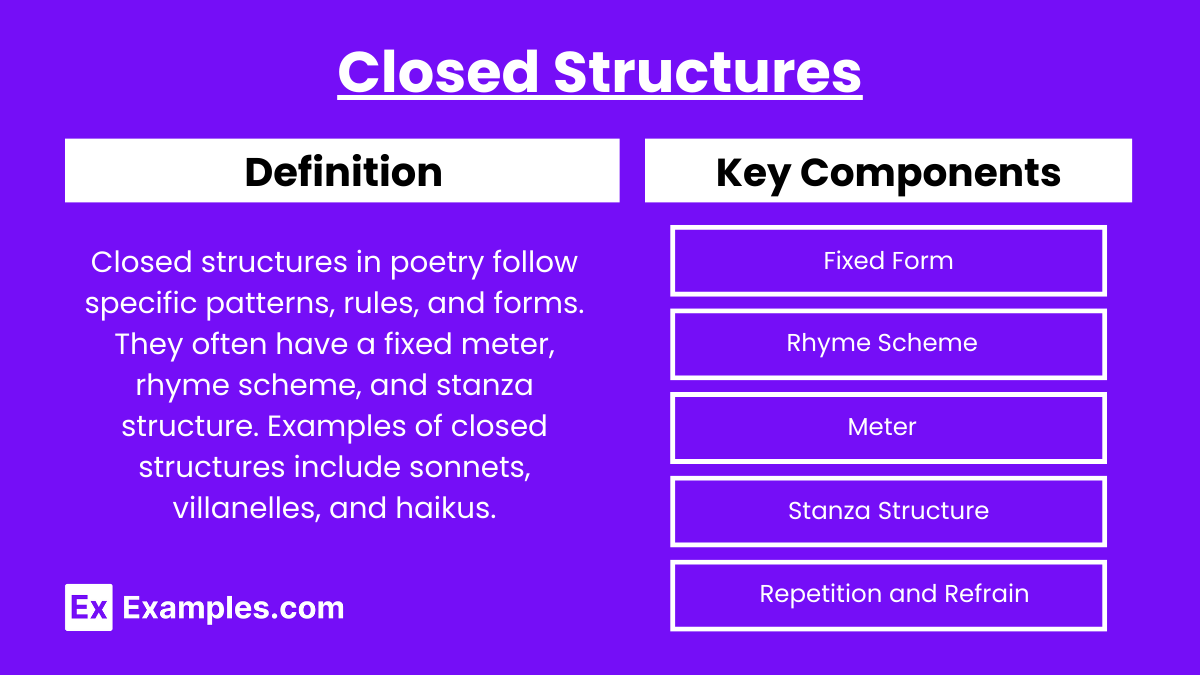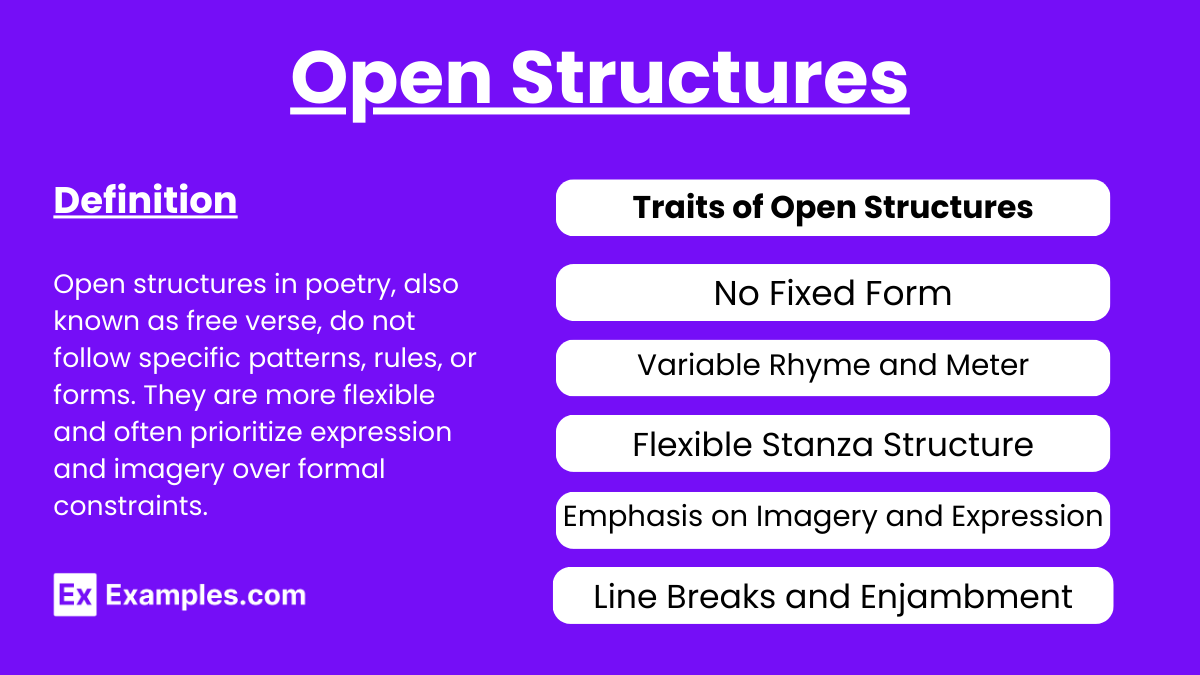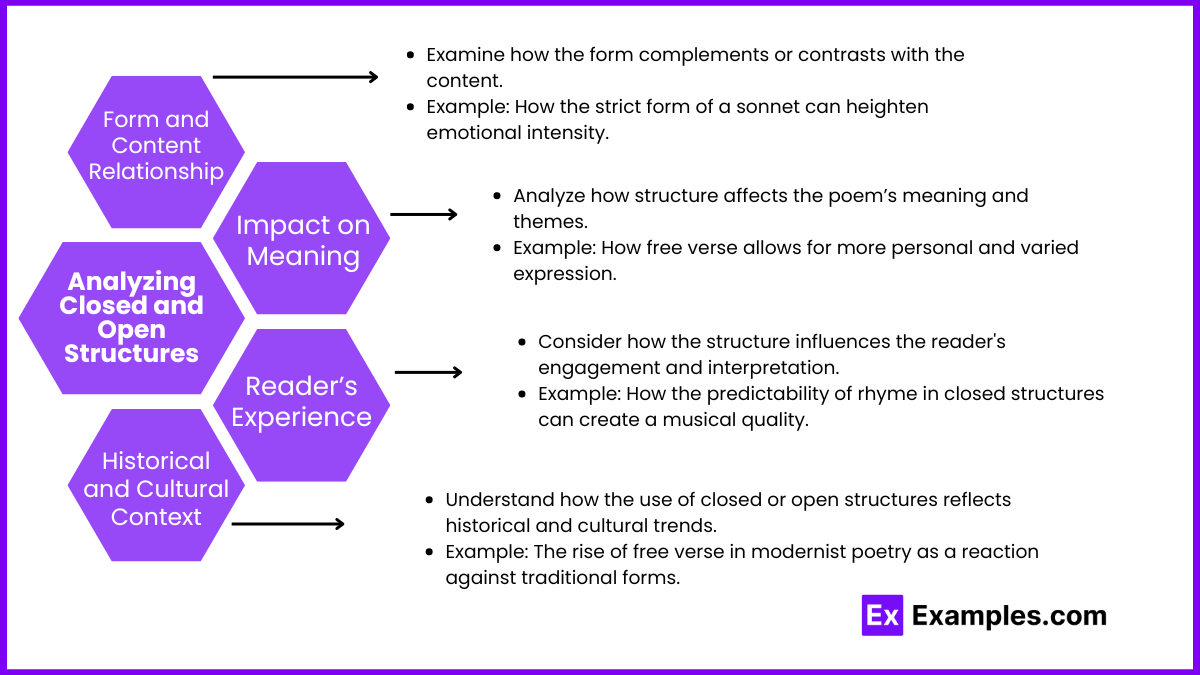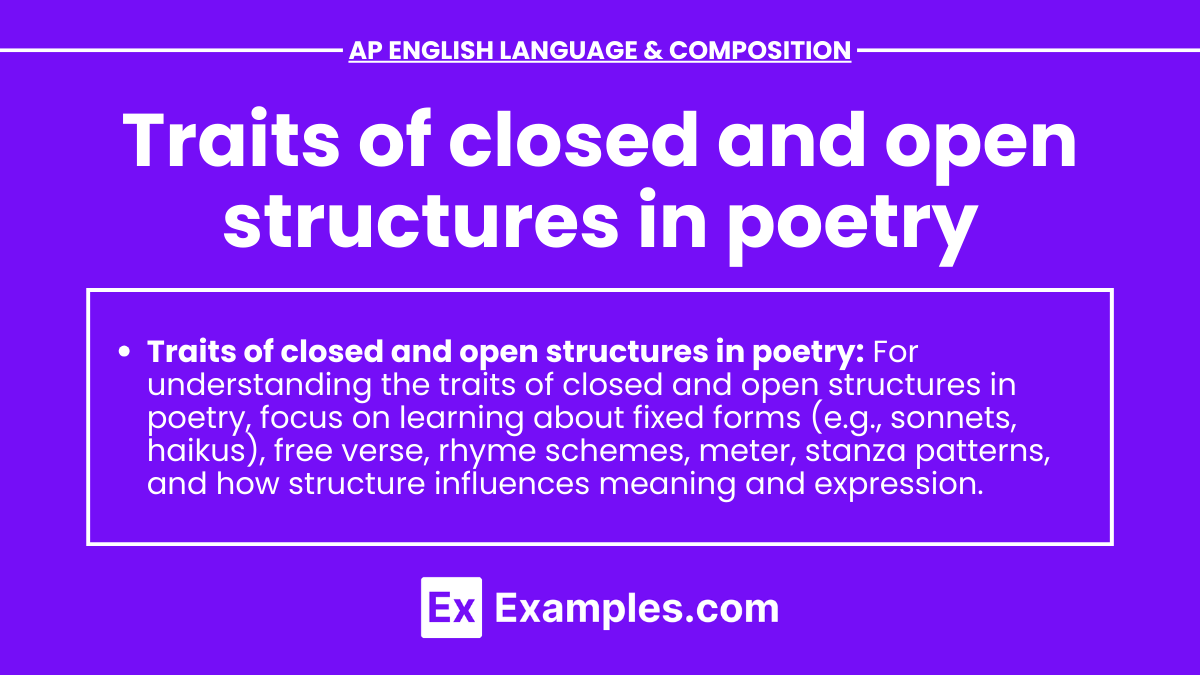In preparing for the AP English Language and Composition exam, understanding the traits of closed and open structures in poetry is crucial for effective argumentative writing and argumentative speech. By crafting rhetorical sentences and utilizing cumulative sentences, students can deeply analyze how the structured forms of closed poetry, with their fixed rhyme schemes and meters, contrast with the flexible and expressive nature of open poetry or free verse. This knowledge allows students to construct compelling literary arguments, highlighting the impact of poetic structures on meaning and reader experience.
Learning Objectives
In studying the traits of closed and open structures in poetry for AP English Language and Composition, students will achieve several key learning objectives. They will learn to identify and construct cumulative sentences that effectively build detail and nuance in their analyses. They will enhance their ability to write explanatory essays that clearly elucidate the characteristics and effects of different poetic structures, as well as expository essays that explore and compare these structures in depth. Through the use of precise rhetorical sentences, students will convey intricate ideas with clarity and persuasiveness, leading to the development of coherent and insightful final thesis statements. Additionally, they will apply critical thinking to analyze and interpret the use of closed and open structures in poetry, connecting these elements to broader themes and crafting well-supported arguments in their writing.
Closed Structures

Closed structures in poetry follow specific patterns, rules, and forms. They often have a fixed meter, rhyme scheme, and stanza structure. Examples of closed structures include sonnets, villanelles, and haikus.
Traits of Closed Structures
- Fixed Form:
- Poems have a predetermined structure, such as the 14-line format of a sonnet.
- Example: Shakespearean sonnet (ABABCDCDEFEFGG).
- Rhyme Scheme:
- Adherence to a specific rhyme scheme is common in closed structures.
- Example: Villanelle (ABA ABA ABA ABA ABA ABAA).
- Meter:
- Consistent meter, such as iambic pentameter, is often used.
- Example: Heroic couplets, which use rhymed pairs of lines in iambic pentameter.
- Stanza Structure:
- Regular stanza patterns, like quatrains or sestets.
- Example: Haiku (three lines with a 5-7-5 syllable pattern).
- Repetition and Refrain:
- Repetitive elements and refrains are common.
- Example: The repeated lines in a villanelle.
Open Structures

Open structures in poetry, also known as free verse, do not follow specific patterns, rules, or forms. They are more flexible and often prioritize expression and imagery over formal constraints.
Traits of Open Structures
- No Fixed Form:
- Poems do not adhere to a predetermined structure.
- Example: Walt Whitman’s free verse in “Leaves of Grass.”
- Variable Rhyme and Meter:
- Rhyme schemes and meter are irregular or absent.
- Example: The absence of a consistent rhyme scheme in modern free verse.
- Flexible Stanza Structure:
- Stanzas vary in length and form, reflecting the poem’s content and flow.
- Example: Langston Hughes’ “The Weary Blues.”
- Emphasis on Imagery and Expression:
- Focus on vivid imagery, emotional expression, and thematic depth.
- Example: The use of strong visual and emotional imagery in Allen Ginsberg’s “Howl.”
- Line Breaks and Enjambment:
- Creative use of line breaks and enjambment to enhance meaning and rhythm.
- Example: The use of enjambment in T.S. Eliot’s “The Waste Land.”
Analyzing Closed and Open Structures

- Form and Content Relationship:
- Examine how the form complements or contrasts with the content.
- Example: How the strict form of a sonnet can heighten emotional intensity.
- Impact on Meaning:
- Analyze how structure affects the poem’s meaning and themes.
- Example: How free verse allows for more personal and varied expression.
- Reader’s Experience:
- Consider how the structure influences the reader’s engagement and interpretation.
- Example: How the predictability of rhyme in closed structures can create a musical quality.
- Historical and Cultural Context:
- Understand how the use of closed or open structures reflects historical and cultural trends.
- Example: The rise of free verse in modernist poetry as a reaction against traditional forms.


